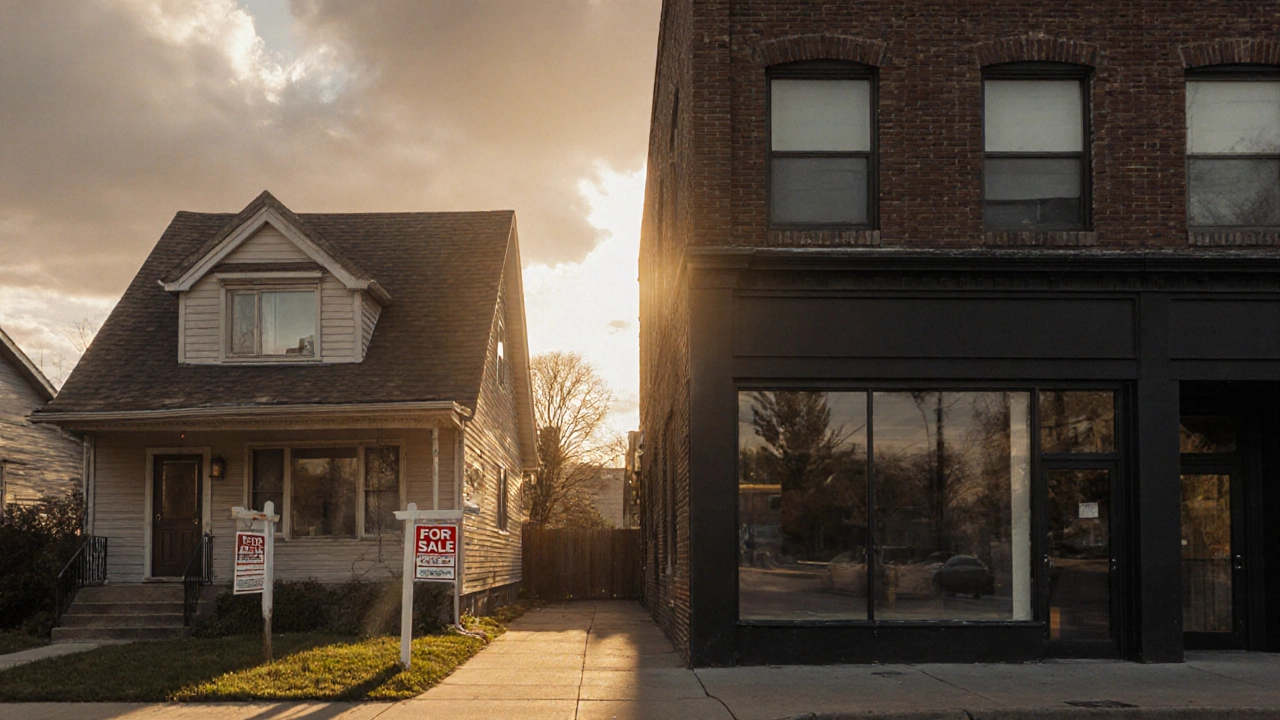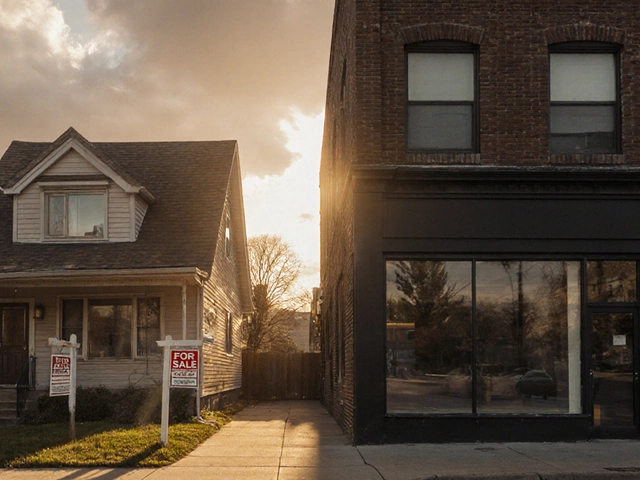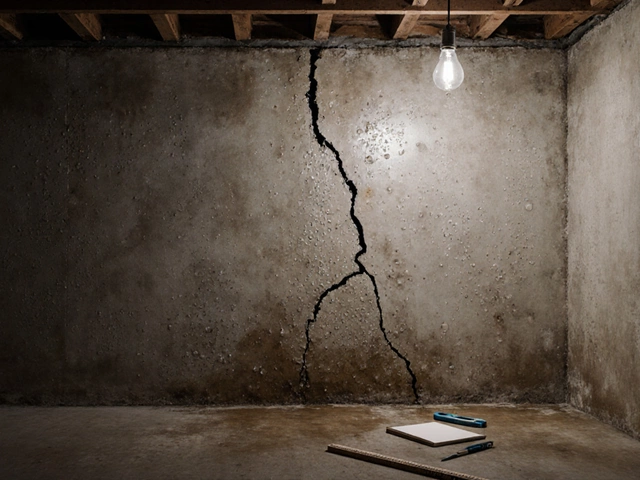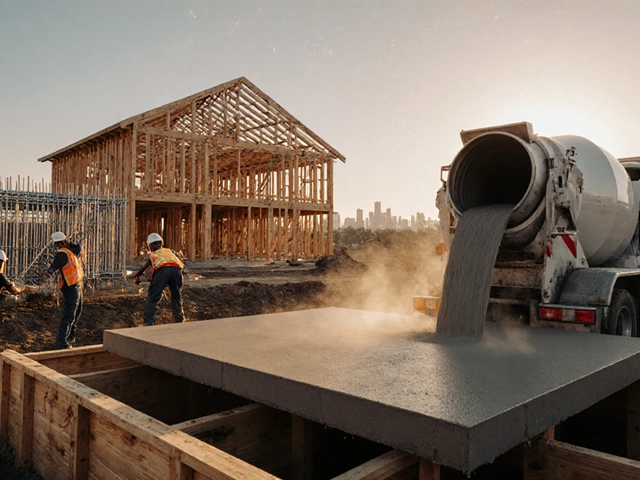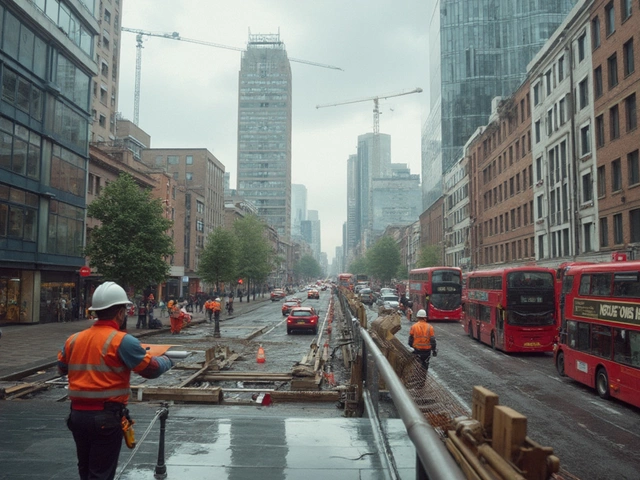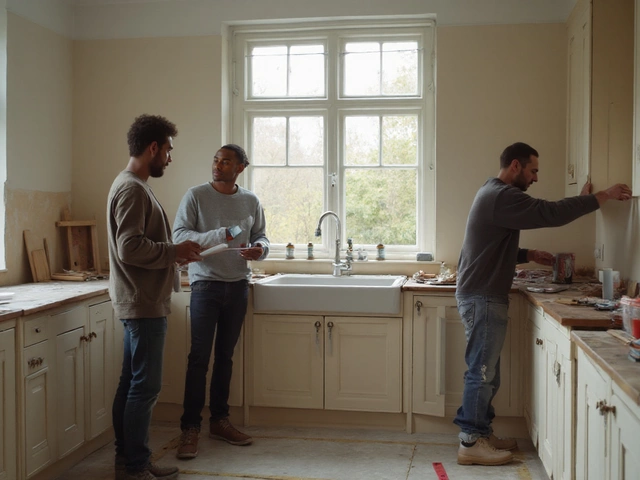Commercial Mortgage Rate Calculator
Compare how commercial mortgage rates (typically 2-3% higher) impact your payments versus residential mortgages.
Payment Comparison
Residential Mortgage
Monthly Payment:
Total Interest:
Commercial Mortgage
Monthly Payment:
Total Interest:
Why the difference? Commercial mortgages have higher rates due to business risk, shorter terms, and less stability. The average commercial rate is typically 2.5% higher than residential rates.
Note: Commercial rates shown assume a 2.5% higher rate than residential. Actual rates vary based on tenant quality, loan term, and lender requirements.
When you’re buying a house, you might get a mortgage rate around 5%. But if you’re buying an office building, a warehouse, or a retail strip mall, that same loan could cost you 7%, 8%, or even more. It’s not a mistake. It’s not a scam. It’s just how the system works. Commercial mortgage rates are consistently higher than residential ones-and there are solid, practical reasons why.
It’s Not Just About the Building, It’s About the Business
A residential mortgage is backed by a home. That home is mostly a personal asset. Even if the borrower loses their job, they’re still likely to keep paying to avoid losing their place to live. People prioritize their homes. They’ll cut back on vacations, delay car repairs, or take on side gigs before they let a house go into default. A commercial property? It’s different. That building is a business tool. If the tenant leaves, the rent stops. If the economy dips, sales drop. If the landlord can’t cover the mortgage, they might walk away-not because they’re desperate, but because the numbers no longer make sense. Lenders know this. They see commercial loans as riskier because the income stream is tied to business performance, not personal survival.Loan Terms Are Shorter and Balloon Payments Are Common
Residential mortgages usually last 25 to 30 years. You pay down the balance slowly. Every payment reduces the principal. By the end, you own the home outright. Commercial loans? They’re often 5, 7, or 10 years long. At the end of that term, you face a balloon payment-meaning you owe the entire remaining balance all at once. Most borrowers can’t pay that lump sum. So they refinance. But refinancing isn’t guaranteed. Interest rates could be higher then. The property might have dropped in value. Or the lender might just say no. That uncertainty means lenders charge more upfront to protect themselves. Higher rates act as a buffer against the risk that the loan won’t be repaid in full.Down Payments Are Bigger-But So Is the Risk
You might need 20% down to buy a house. For a commercial property? 25% to 35% is typical. That sounds like a good thing-it means the borrower has more skin in the game. But here’s the catch: commercial properties are harder to sell quickly. If a borrower defaults, the lender has to take over a building that needs a tenant, maintenance, insurance, and property taxes. Finding a buyer for a vacant retail space or an outdated office building takes months, sometimes years. Residential homes? They sell faster, especially in stable markets. The longer it takes to recover the asset, the more money the lender loses. That’s why they charge more.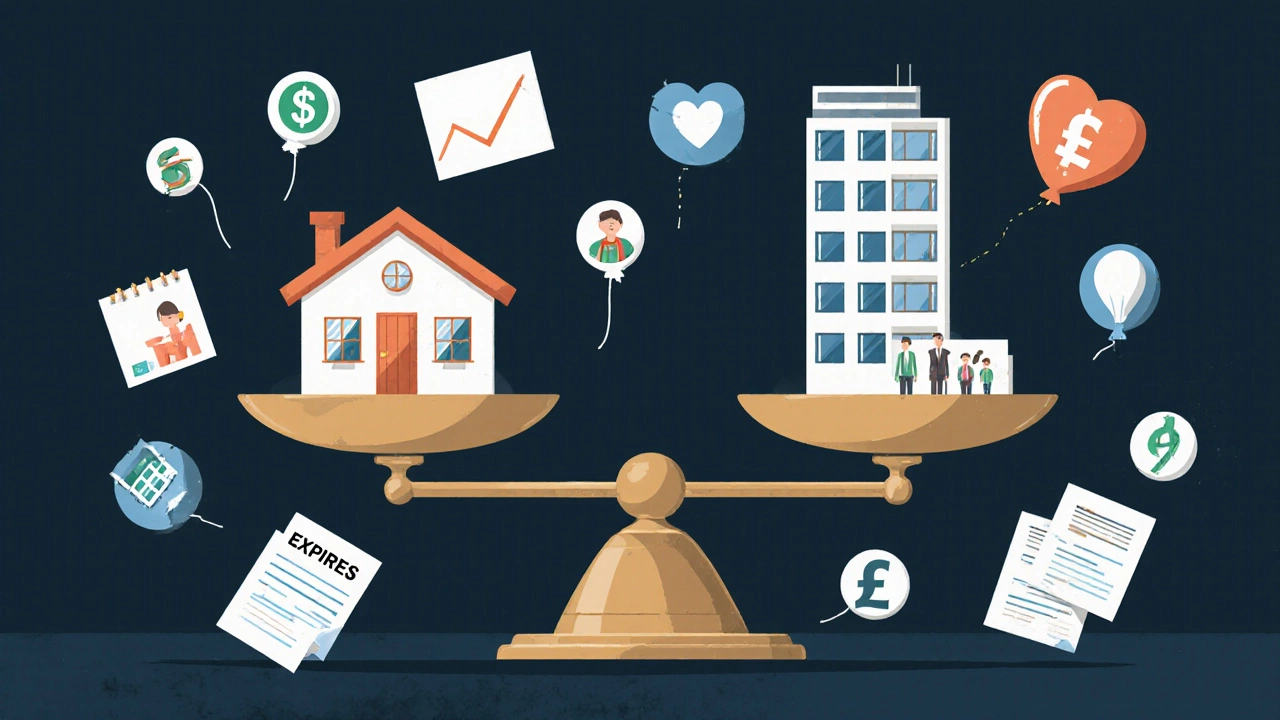
Appraisals and Due Diligence Are More Complex
When a bank approves a residential loan, they get a basic appraisal. They check the square footage, compare it to similar homes nearby, and look at recent sales. For a commercial property, the appraisal is way more detailed. They look at the building’s income potential. How much rent is it bringing in? Are the leases locked in? What’s the credit score of the tenants? What’s the vacancy rate in the neighborhood? Is the building up to current zoning and safety codes? This takes time. It takes experts. It costs more. Lenders pass those costs on through higher interest rates. It’s not just about the building-it’s about the financial health of the entire operation.Regulations Are Lighter for Commercial Loans
Residential mortgages are heavily regulated. In Canada, lenders must follow strict rules under the Office of the Superintendent of Financial Institutions (OSFI). They have to verify income, check credit history, and prove the borrower can afford payments-even if rates go up. Commercial loans? Not so much. There’s far less government oversight. That might sound like a good thing for borrowers, but it’s the opposite. Because there’s less protection, lenders demand more in return. Higher rates, stricter terms, and bigger down payments are their way of balancing the lack of regulation. It’s not that commercial loans are unregulated-they’re just regulated differently. And the market compensates for the added uncertainty with higher costs.Loan Amounts Are Larger, So the Stakes Are Higher
A $500,000 home loan is big. A $5 million warehouse loan? That’s a different level of risk. When a lender is putting millions on the line, they can’t afford to be wrong. One bad commercial loan can wipe out the profit from dozens of residential loans. That’s why banks are more cautious. They use higher rates to reduce their exposure. Even a 1% difference on a $3 million loan means $30,000 more in interest over five years. That’s a big cushion. Also, commercial lenders often work with fewer borrowers. They can’t spread risk across thousands of loans like residential lenders do. So each deal matters more. Higher rates help offset that concentration risk.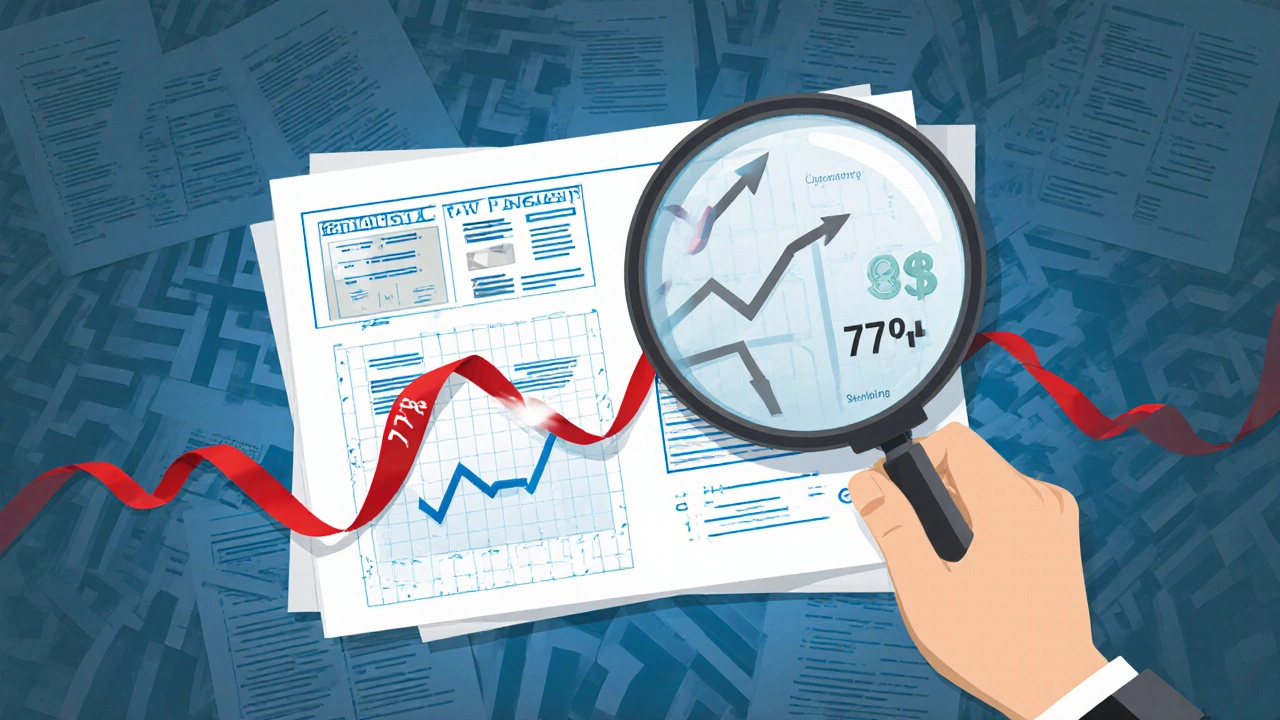
What Happens When Rates Go Up?
Residential borrowers get hit when rates rise, but they usually have fixed-rate mortgages for 5 to 10 years. Even variable-rate homeowners often have payment caps. Commercial borrowers? Many have variable rates built into their loans. If the prime rate jumps, so does their payment. There’s no cap. No protection. One year, they’re paying 7%. The next, 9%. That kind of volatility scares lenders less because they know commercial borrowers are used to it. But it also means they charge more from the start to account for future spikes.Is There Any Way to Get a Lower Rate?
Yes-but it’s not easy. Here’s what actually works:- Strong tenant leases: If you have long-term leases with creditworthy tenants (like a grocery chain or a national pharmacy), lenders will lower their rate. Tenants = steady income = less risk.
- High down payment: Putting down 40% instead of 25% can cut your rate by 0.5% to 1%.
- High credit score: Personal credit scores above 700 help, especially for small business owners. Lenders look at your history, not just the property.
- Low debt-to-income ratio: If your business already has strong cash flow and low other debts, lenders see you as safer.
- Work with a commercial mortgage broker: Brokers know which lenders specialize in your type of property. They can match you with the right one, saving you time and money.
Bottom Line: Higher Rates Reflect Real Risk
Commercial mortgage rates aren’t higher because lenders are greedy. They’re higher because the risks are real. The property isn’t just a place to live-it’s a business. And businesses fail. Tenants leave. Markets shift. Lenders have to price for that. If you’re planning to buy commercial property, don’t just look at the monthly payment. Look at the lease terms. Look at the tenant quality. Look at how long the loan term really is. And understand that the higher rate isn’t a penalty-it’s the cost of doing business in real estate that’s tied to the economy, not your paycheck.Why are commercial mortgage rates higher than residential?
Commercial mortgage rates are higher because the loans are riskier. Unlike residential properties, commercial buildings rely on business income, not personal stability. Tenants can leave, leases can expire, and the property’s value depends on market conditions. Lenders charge more to protect themselves against defaults, longer resale times, and complex appraisals tied to cash flow.
Do commercial mortgages have fixed rates?
Some do, but most commercial mortgages have variable rates or fixed terms of 5 to 10 years with a balloon payment due at the end. Fixed-rate commercial loans are less common and usually come with higher rates because lenders are locking in their risk for longer.
How much down payment is needed for a commercial mortgage?
Typically, you’ll need between 25% and 35% down for a commercial property. Some lenders may require more if the property is high-risk-like a restaurant or hotel. A larger down payment can lower your interest rate and improve your chances of approval.
Can I get a commercial mortgage with bad credit?
It’s possible, but difficult. Most lenders require a personal credit score of at least 680. If your credit is below that, you’ll need a stronger business plan, higher down payment, or a co-signer. Some alternative lenders offer options, but expect higher rates and stricter terms.
What’s the difference between a commercial and residential appraisal?
A residential appraisal looks at comparable home sales and physical condition. A commercial appraisal focuses on income potential: rent rolls, tenant credit, lease terms, and vacancy rates. The value is based on how much money the property makes, not just how nice it looks.
